Happy Wednesday! The owner of KFC recently announced plans to move the popular fast food chain’s headquarters from Louisville, Kentucky, to Plano, Texas. We’re all for low corporate taxes, but “TFC” just doesn’t have the same ring to it.
Quick Hits: Today’s Top Stories
- Secretary of State Marco Rubio indicated Tuesday that the United States and Russia had agreed to restaff their respective embassies. His announcement followed the first day of high-level talks between Russian and American officials in Riyadh, Saudi Arabia, aimed at ending the war in Ukraine and improving U.S.-Russia cooperation. The State Department laid out plans to pursue “historic economic and investment opportunities” with Russia after the fighting has ceased and alluded to the possibility of lifting sanctions on the country. Ukrainian President Volodymyr Zelensky, meanwhile, reportedly postponed a planned trip to Saudi Arabia to avoid giving the negotiations—to which he said he initially hadn’t been invited—“legitimacy.”
- A Hamas negotiator on Tuesday announced plans to return the bodies of four murdered hostages to Israel on Thursday, including Shiri Bibas and her two young boys, Ariel and Kfir. Terrorists abducted the mother and children from their Nir Oz home on October 7, 2023, along with Shiri’s husband Yarden, who was separated from his family during the attack and released this month as part of the ongoing U.S.-brokered, three-phase ceasefire deal. Israel has yet to confirm the remaining family members’ deaths, but expressed “grave concerns” about their status last month. Kfir was the youngest abductee at just 9 months old at the time of his kidnapping. Hamas also said Tuesday that it would free the six remaining living hostages slated for release in the first stage of the deal on Saturday.
- Multiple outlets reported Tuesday that Michelle King, acting commissioner of the Social Security Administration, has stepped down over the Department of Government Efficiency’s efforts to access sensitive government records. Elon Musk’s commission has in recent weeks accessed the Treasury Department’s payment system and is now attempting to obtain sensitive taxpayer data at the Internal Revenue Service as part of DOGE’s ostensible push to audit the federal government. With King’s departure, the White House reportedly appointed SSA employee Leland Dudek to take over as acting commissioner of the independent agency.
- Postmaster General Louis DeJoy announced plans on Tuesday to resign from his position atop the U.S. Postal Service, though he didn’t specify the date of his departure. DeJoy’s announcement followed reports that the Trump administration was looking into candidates to replace him, though the postmaster general is typically chosen by an independent governing board. President Donald Trump had also floated the possibility of privatizing the federal agency, which lost $9.5 billion in the 2024 fiscal year.
- Jim Jones, the head of the Food and Drug Administration’s food division, resigned from his post on Monday in response to the Trump administration’s sweeping layoffs. Of the 2,000 employees in his division, 89 people—including new staffers hired to investigate the risk of chemicals in the food industry—were affected by cuts that Jones described as “indiscriminate” in a resignation letter. “The secretary’s comments impugning the integrity of the food staff, asserting they are corrupt based on falsities, is a disservice to everyone,” he added of newly confirmed Health Secretary Robert F. Kennedy Jr.’s past attacks on the FDA.
- The Senate voted 51-45 along party lines on Tuesday to confirm Howard Lutnick as commerce secretary. The former CEO of investment firm Cantor Fitzgerald, Lutnick will be tasked with managing 50,000 employees as he seeks to implement President Trump’s protectionist trade priorities. As a nominee, the billionaire signaled his support for tariffs and limited regulations on artificial intelligence development.
- U.S. Customs and Border Protection reported Tuesday that immigration authorities apprehended some 29,000 people trying to illegally cross the U.S.-Mexico border in January—the lowest level since May 2020. The agency also noted that illegal crossings between January 21 and January 31 had dropped 85 percent year-over-year. The largest number of monthly migrant apprehensions to date came in December 2023, at 230,000 arrests, and has steadily decreased since.
The ‘Pandemic Potential’ of H5N1
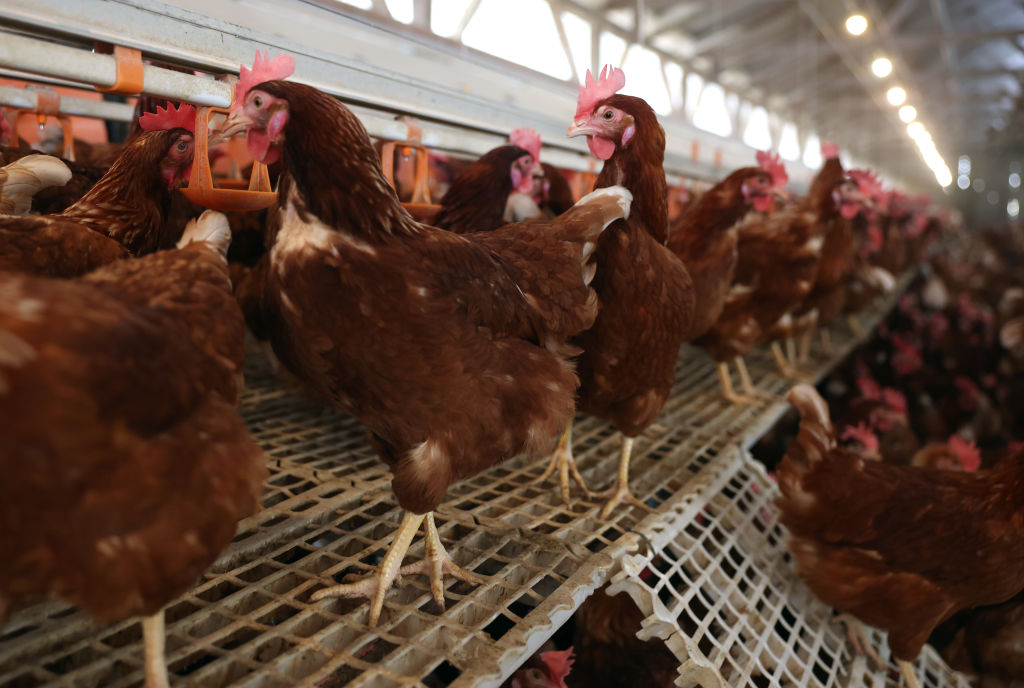
When the January consumer price index report dropped last week, it came with more bad news for breakfast lovers: a record high for egg prices, which hit $4.95 for a dozen. Grocery stores across the country have begun imposing purchase limits, while criminals are carrying out egg heists. And according to our own Scott Lincicome’s totally scientific scale, we’re currently at EGGCON 3—not yet an egg-istential crisis but still concerning.
The culprit? A now-yearslong outbreak of the H5N1 strain of avian influenza virus, which has forced farmers to kill tens of millions of infected and exposed birds. The flu made the jump to dairy cows last spring, and the first human death in the United States from the virus occurred last month.
While health authorities maintain that the bird flu currently represents a low risk to people, researchers warn the extended duration of the outbreak increases the potential of the virus mutating and leading to widespread human-to-human transmission. Meanwhile, the Trump administration has signaled a forthcoming change in strategy as the government response thus far comes under fire.
The H5N1 virus, which is most commonly found in birds, has circulated for decades since its discovery in 1996. The virus can spread via wild migratory flocks infected with the flu, making it challenging to contain. The virus has plagued commercial poultry farms since an outbreak in February 2022, and more than 159 million birds have died or been killed to stem the spread in the last three years. Poultry farmers across the country have been hit hard with many of them losing all of their flocks. The U.S. Department of Agriculture (USDA) compensates farmers for birds that are culled after an outbreak has been detected, but not those that have died from the virus—a policy intended to incentivize farmers to detect and report outbreaks as soon as possible.
The bird flu can also infect wild mammals as wide-ranging as mountain lions and bottlenose dolphins, but the jump to dairy cows for the first time last year is particularly concerning to some researchers. More than 970 cow herds across 17 states have been infected with the virus. California, the nation’s largest milk producer, declared a state of emergency in December as roughly 70 percent of the state’s dairy herds contracted the virus. Infected dairy cows have a much lower mortality rate for the virus compared to chickens, but some cows experience reduced milk production even after recovering from the virus. Last April, the first known case of mammal-to-human transmission of H5N1 came from a person in Texas exposed to dairy cows presumed to be infected with the virus.
“What’s concerning is the spillover events to humans,” Isaac Bogoch, a tropical disease doctor and researcher at the University of Toronto, told TMD. There have been 68 human cases of the virus so far, with the majority of them stemming from exposure to infected dairy cows and poultry. But a study from the Centers for Disease Control and Prevention (CDC) published Thursday and a previous study from August suggested that the number of human cases could be much higher due to insufficient testing and cases where individuals don’t experience noticeable symptoms. Between 2003 and January 2025, there have been 964 human cases in 24 countries, according to data from the World Health Organization.
People can contract the virus when in close proximity to infected animals if the virus gets into their eyes, nose, or mouth—most human cases have experienced conjunctivitis, suggesting infection via the eyes. Very few of the confirmed human cases have resulted in serious illness. The woman who died in Louisiana was over 65 and had underlying medical conditions. A 13-year-old in Canada with mild asthma and obesity was hospitalized after contracting the virus last fall and nearly died, having to be intubated and placed on life support, before recovering sufficiently to be discharged in January. Last week, an elderly Wyoming woman became the third American case requiring hospitalization.
The danger lies not in the virus as it is currently transmitted to humans but in potential mutations that could increase the virus’s transmissibility and virulence, threatening an epidemic or pandemic. Historically, human-to-human transmission of the virus has been limited, primarily occurring within households. So far, the transmission has not been efficient enough for sustained spread, and there have been no reported cases of human-to-human transmission in the current outbreak.
But the longer the outbreak continues unchecked, particularly among mammals, the greater the risk of mutations that could result in sustained, human-to-human spread. During flu season, researchers are concerned about people and mammals contracting bird flu and other more transmissible types of the flu simultaneously. This creates the potential for viral reassortment, wherein H5N1 could take on some of the genetic features of another, more transmissible strain. This kind of reassortment in combination with the right mutations could result in elevated pandemic risk. The CDC’s guidance encourages farm workers to get the seasonal flu vaccine to reduce the chances of dual infections.
“There’s significant uncertainty,” Bogoch said, “but there are arrows pointing in the direction that this certainly does have epidemic and pandemic potential.”
Trump officials have criticized the previous administration’s response to the outbreak as ineffective and driving up egg prices. “They spent billions of dollars just randomly killing chickens within a perimeter where they found a sick chicken,” Kevin Hassett, the director of the National Economic Council, said in an interview Sunday. The response until now, while failing to stop the virus’ spread, has followed the USDA’s policy playbook of culling to contain. Some former public health officials and researchers have criticized the Biden administration for responding too slowly. Only in December did the USDA begin standing up a national dairy milk testing regime despite earlier signs of a lack of testing.
Hassett outlined what appears to be the concept of a plan intended to reduce the number of chickens killed. “What we need to do is have better ways, with biosecurity and medication and so on, to make sure that the perimeter doesn’t have to kill the chickens,” he said. “Have a better, smarter perimeter. And so having a smart perimeter is what we’re working on, and we’re finalizing the ideas about how to do that with the best scientists in government.”
It’s unclear what would be involved in “biosecurity and medication” or how the administration will approach the human epidemic risk of the virus. The egg industry has spent hundreds of millions of dollars on improved biosecurity, including investing in truck washing stations, bussing in workers to reduce foot traffic, and lighting systems that discourage waterfowl from landing, said Emily Metz, president and CEO of the American Egg Board. “All the measures we’re doing are still getting beat by this virus,” she added.
Developing and deploying a bird flu vaccine for poultry is one idea that some industry representatives have begun expressing cautious interest in. Last week, the USDA issued a conditional license to the pharmaceutical company Zoetis for an update to its vaccine for use in chickens that was initially developed in the early 2000s. The government has maintained a stockpile of vaccines for use in chickens, but they are not fully updated for the strain of the current outbreak. In the final weeks of the Biden administration, the USDA announced it was moving to update the stockpile but had not made a broader policy shift away from a culling to a vaccination response. But assuming the newer vaccines are effective, some virologists argue vaccinations aren’t necessarily a silver bullet as they don’t prevent infection and would need to be deployed strategically as one piece of a broader eradication effort.
The president has reportedly tapped Gerald Parker, a veterinarian and a former senior public health and biosecurity official, to lead the White House Office of Pandemic Preparedness. Dr. Ashish Jha, the former White House COVID-19 response coordinator in the Biden administration, described Parker as “a very good choice” and “deeply knowledgeable, serious, not particularly partisan, but really just very focused on important issues.”
But the Trump administration’s early steps appear to have at least partially hampered the outbreak response. The freeze on communications from public health agencies, including the CDC and the USDA, left state health officials and researchers working on the virus confused and isolated as meetings were canceled and regular reports on the course of the outbreak withheld. The USDA also admitted Tuesday that it accidentally fired employees working on the virus response that they’re now trying to rehire, and a quarter of the staff in the USDA’s National Animal Health Laboratory Network’s program office has been let go. The office manages data and coordination across the labs doing animal testing including those working on the bird flu—labs were notified Friday that H5N1 testing would be slower following the firings.
While there’s no way to confidently predict whether the bird flu will become a serious threat to humans, more scientists have grown concerned with how long the outbreak has dragged on. “Some people might say, ‘Well, you know what, if we’re going to have an epidemic or a pandemic wouldn’t we have seen it by now?” Bogoch told TMD. “And the answer is, maybe, maybe not, but, the costs of being wrong are pretty catastrophic.”
Worth Your Time
- In a stunning portrait of human progress, Charles C. Mann compared the lives of average middle-class Americans today to those of 18th-century elites. Take Thomas Jefferson, for example: “Jefferson lived in a world of horse-drawn carriages, blazing fireplaces, and yellow fever. But what most separates our day from his is not our automobiles, airplanes, and high-rise apartments — it is that today vast systems provide abundant food, water, energy, and health to most people. … In Jefferson’s time, not even the president of the United States had what we have,” Mann wrote in the New Atlantis. “Jefferson believed that an informed citizenry was necessary to democratic self-rule — a mandate that extends all the way out to understanding the systems that envelop us. It’s easy to see why he believed this: Voters who understand how we are entwined with these systems will support maintaining and expanding them for our children and grandchildren. … Water, food, energy, public health — these embody a gloriously egalitarian and democratic vision of our society. Americans may fight over red and blue, but everyone benefits in the same way from the electric grid. Water troubles and food contamination are afflictions for rich and poor alike. These systems are powerful reminders of our common purpose as a society — a source of inspiration when one seems badly needed.”
Presented Without Comment
New York Times: Bannon Calls Musk a ‘Parasitic Illegal Immigrant’
Also Also Presented Without Comment
NBC News: Trump Says Ukraine ‘Should Have Never Started It’ in Comments About War With Russia
In the Zeitgeist
Almost exactly 56 years ago to the day, Johnny Cash and Bob Dylan met in Nashville, Tennessee, to record a duet of “Girl from the North Country.” We personally think the harmonies make it the best version of the iconic song.
Toeing the Company Line
- In the newsletters: Nick Catoggio considered conservatism, nationalism, and patriotism in today’s America.
- On the podcasts: Victoria Holmes interviewed Ryan Holiday on how to stay optimistic in a cynical world on The Skiff (🔒). And on today’s Remnant, Bret Stephens joins Jonah Goldberg to discuss Trump’s first month in office, efforts to push Ukraine toward a one-sided ceasefire, and more.
- On the site: Jonah argues that nothing good can come from Trump’s invocation of Napoleon, Kevin Williamson criticizes the administration’s moves on Ukraine, and Paul Matzko makes the case that Trump is Nixon 2.0.
Let Us Know
What’s your favorite overlooked modern luxury?




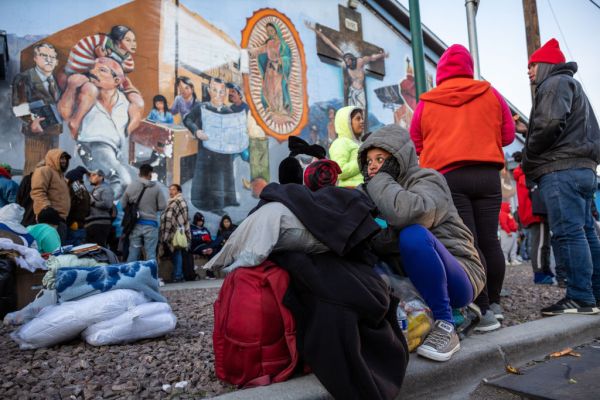
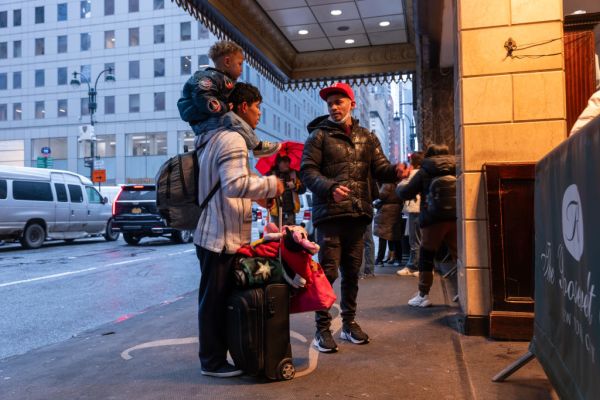
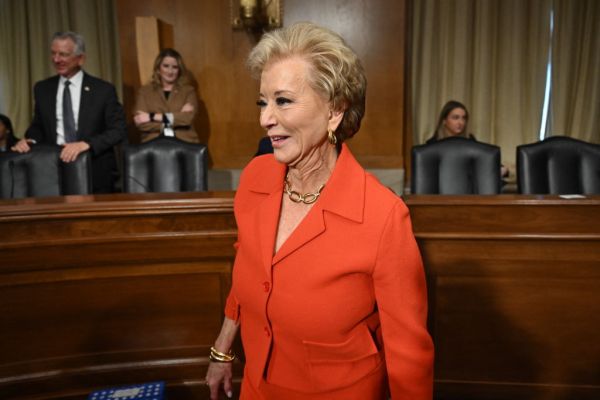

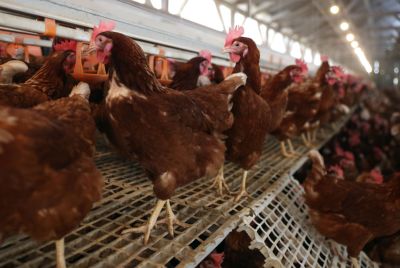
Please note that we at The Dispatch hold ourselves, our work, and our commenters to a higher standard than other places on the internet. We welcome comments that foster genuine debate or discussion—including comments critical of us or our work—but responses that include ad hominem attacks on fellow Dispatch members or are intended to stoke fear and anger may be moderated.
With your membership, you only have the ability to comment on The Morning Dispatch articles. Consider upgrading to join the conversation everywhere.